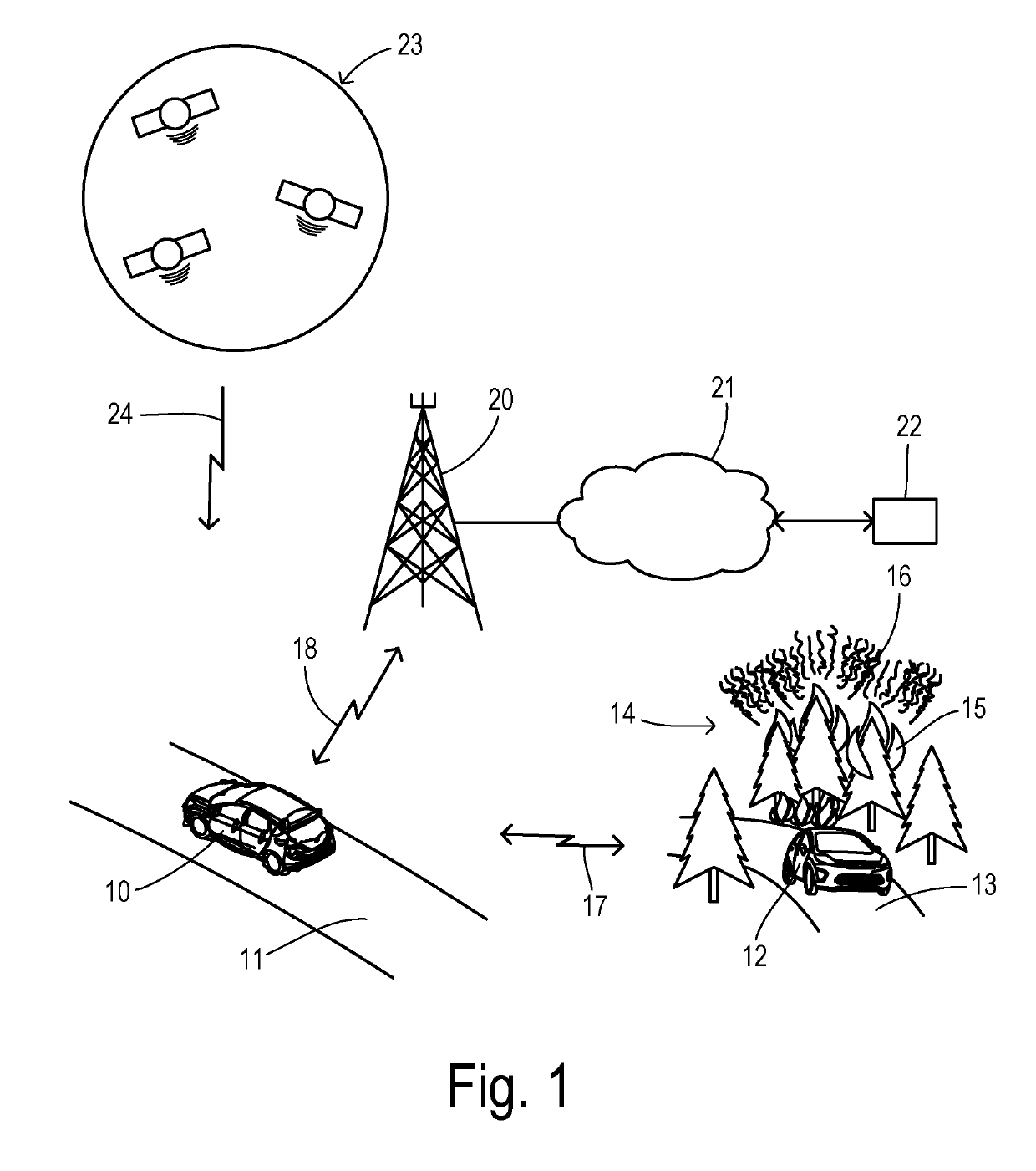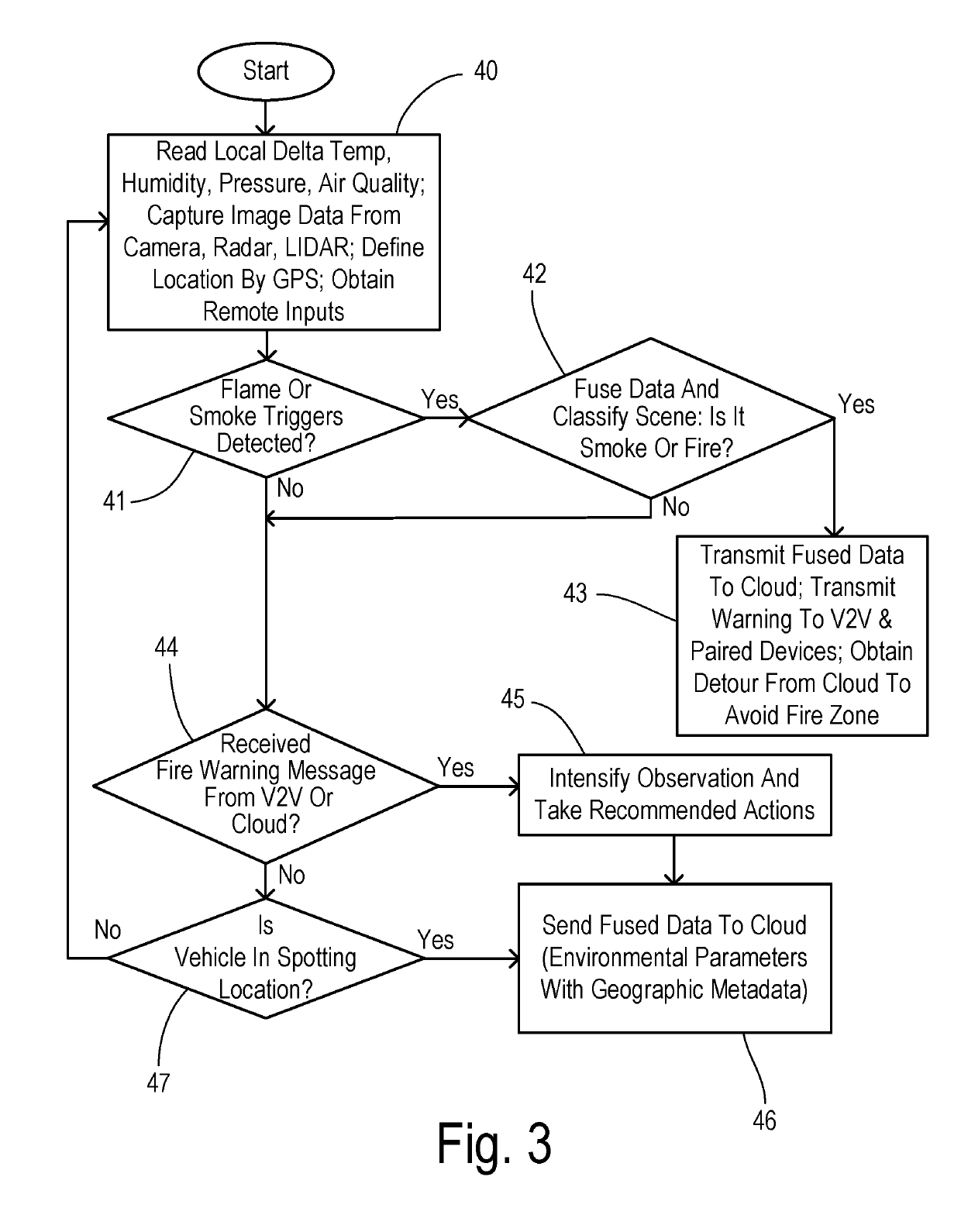Wildfire discovery, monitoring, and response system using personal vehicles
a technology for monitoring and responding systems, applied in fire alarms, instruments, navigation instruments, etc., can solve the problems of reliance on human intervention, and increasing frequency, duration and intensity of wildfires, so as to reduce the risk and cost of wildfires, improve firefighting, and reduce the effect of human intervention
- Summary
- Abstract
- Description
- Claims
- Application Information
AI Technical Summary
Benefits of technology
Problems solved by technology
Method used
Image
Examples
Embodiment Construction
[0016]In some embodiments, vehicle image sensing and recognition systems detect the presence of smoke and / or fire, e.g., using the visible light spectrum of 360-degree cameras. These onboard systems have the advantage of continuous operation, relative proximity to potential sources of wildfires, and can support ongoing operations even after a fire is initially detected (e.g., in response to follow-up requests for data received from a response center). Using V2V networks for data transmission between vehicles (which remains stable even in remote areas), more extensive data sets with multiple camera images from multiple viewing locations and directions can confirm each other, which increases the robustness of discriminating smoke and flame. Moreover, the sensing subsystems and vehicle communication systems can execute the monitoring and signaling tasks without direct human intervention.
[0017]Given that GPS navigation systems are deployed as a standard feature in many vehicles that may...
PUM
 Login to View More
Login to View More Abstract
Description
Claims
Application Information
 Login to View More
Login to View More - R&D
- Intellectual Property
- Life Sciences
- Materials
- Tech Scout
- Unparalleled Data Quality
- Higher Quality Content
- 60% Fewer Hallucinations
Browse by: Latest US Patents, China's latest patents, Technical Efficacy Thesaurus, Application Domain, Technology Topic, Popular Technical Reports.
© 2025 PatSnap. All rights reserved.Legal|Privacy policy|Modern Slavery Act Transparency Statement|Sitemap|About US| Contact US: help@patsnap.com



